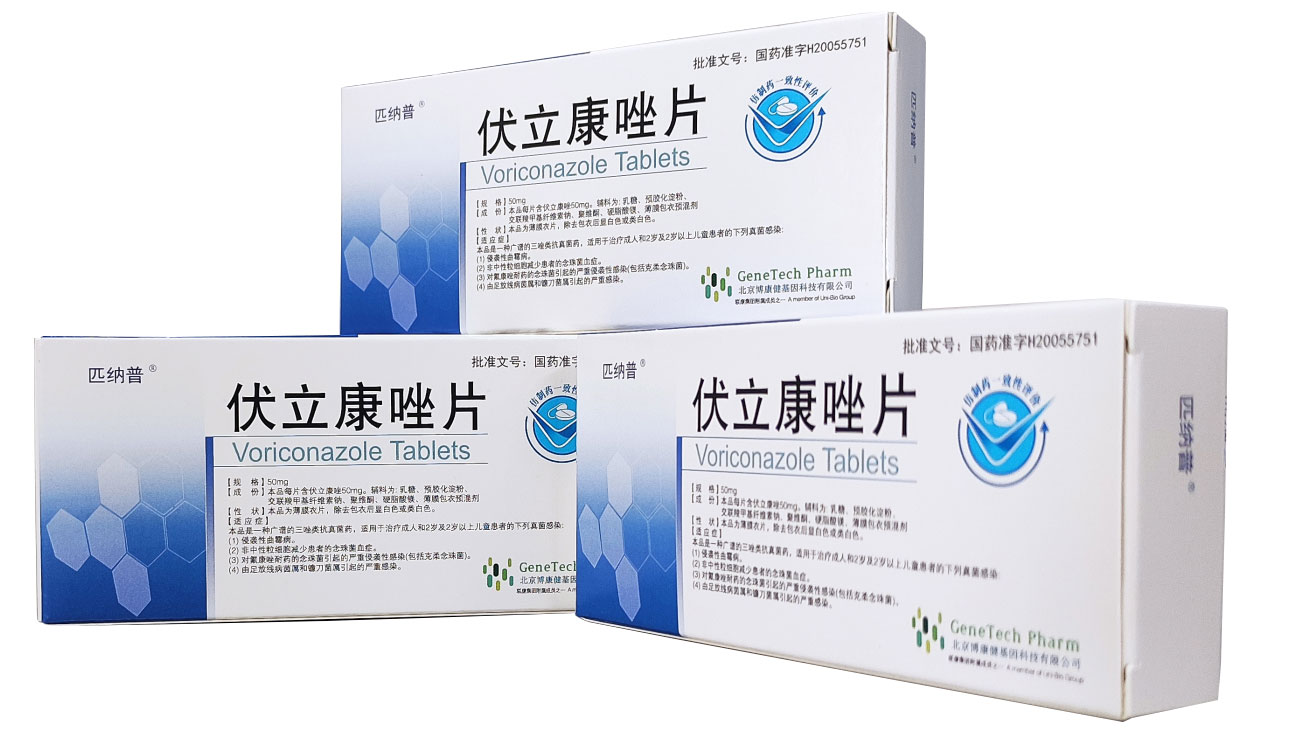Voriconazole inhibits CYP 450-dependent 14α-lanosterol demethylation, an important enzyme for maintenance of a healthy fungi membrane, found commonly in most fungus, including difficult to treat fungus such as candida and aspergillus.
Voriconazole is 2nd generation of triazole antifungal drugs, which demonstrates a superior efficacy profile in relation to other Anti-fungals.
Voriconazole is widely applicable, especially for major pathogenic fungi (including candidiasis and aspergillus in China) , which has high bioavailability (>96%) through oral administration, meaning less side effect such as renal toxicity.

Voriconazole is a first-line treatment recommended by clinical guidelines, with a wide range of applications, works by blocking the growth of cell walls, and is suitable for immunocompromised patients such as oncology, hematology, respiratory, ICUs, etc.
Pinup® was successfully selected in the fourth batch of national drug collection, obtained the largest agreed volume, and its market share increased significantly. The coverage of public hospitals has increased significantly in breadth and depth, which will also win advantages for future bid renewals.
According to IMS statistics, the market size for China’s anti-fungal medicine in 2017 amounted to RMB4.9 billion, of which Voriconazole accounted for the biggest share of approximately 50%. The market value for anti-fungal medicines between 2014 and 2017 maintained a double-digit growth, a level that surpassed the growth of the Chinese pharmaceutical market of 4%-9%.
According to PDB and Menet, the percentage of the orally-administered Voriconazole in all Voriconazole formulation is 37% in 2019 compared with 35% in 2017, representing an increasing trend in oral form market.
In recent years and foreseeable future, there is a continuing shift in treatment paradigm towards oral Voriconazole due to its use as maintenance therapy, as well as the convenient oral formulation against injection formulation.
